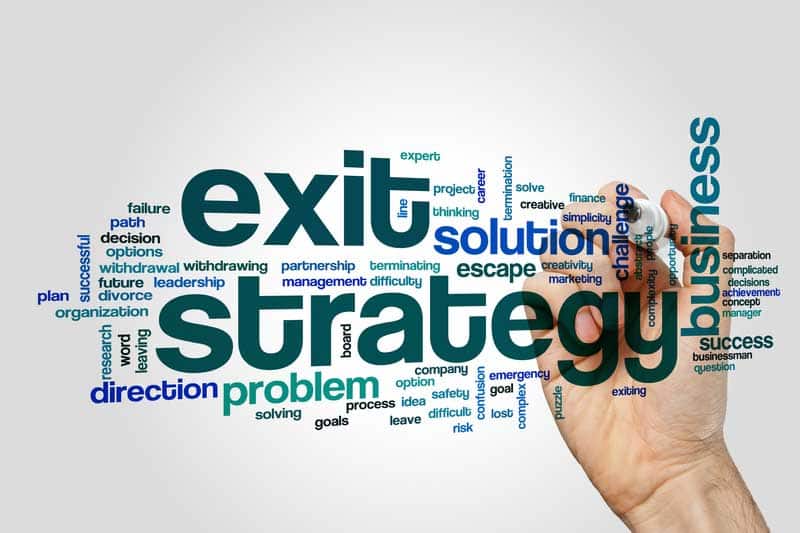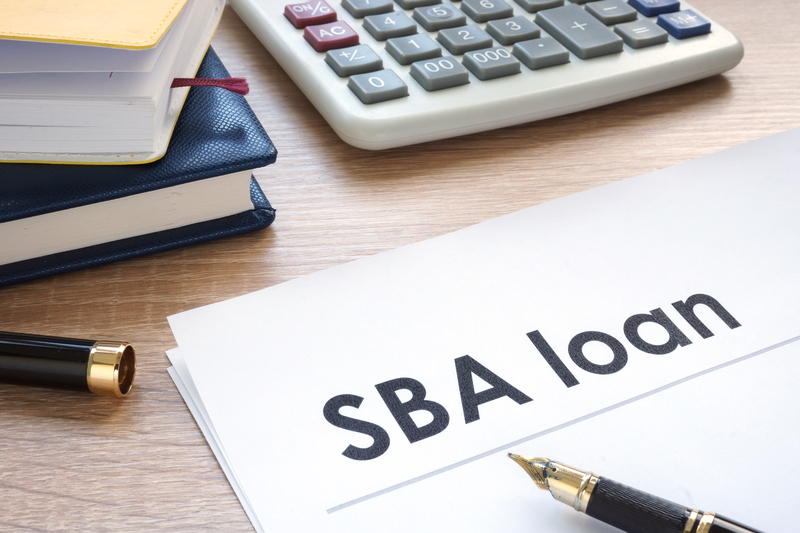Every business owner wants to realize the maximum value when they eventually sell their business. The question is what should you do now to prepare for the sale of your business and maximize business value?
As Middle Market Business Brokers we have sold hundreds of businesses ranging from manufacturing to technology, construction, and Healthcare plus other industries. While these businesses are in diverse industries, the companies that sold for premiums and sold quickly had several things in common. We have outlined the key elements in developing an Exit Strategy to prepare for the sale of your business and maximize the business value.
Developing an Exit Strategy for the Sale of Your Business
Here’s a 7-step outline, with details for each step below, for developing an Exit Strategy to maximize the value of your business. A good exit strategy will also make your business more marketable and reduce your time on market. Your Exit Strategy is essentially building your business to sell.
- Owner Dependency
- Staff
- Infrastructure
- Customer Concentration
- Financial Statements and Tax Returns
- Tax Strategy to Minimize Taxes on the Business Sale
- Financial Performance
Owner Dependency
Buyers place a great deal of importance on the ease of stepping in and running the business. Replacement of the owner is a chief concern in every transaction.
If you have delegated well and have staff handling much of the day-to-day operations this makes your business more desirable to buyers. Conversely, if your business is highly dependent on your expertise and customer relationships and there are no staff members capable of taking on these responsibilities buyers worry about how to replace you and the transition. If you have delegated much of the day-to-day operations to staff you have built a business. If your business is completely dependent on you, you essentially have a job with helpers.
Your Exit Strategy should address Owner Dependency to minimize owner dependency as well as plan for the eventual ownership transition.
Staff
Staff is also important to buyers and a key factor in selling a business. Buyers like to see staff stability (long tenures), good experience, and in larger companies supervisors, foreman, and leads. If your company is large enough to have managers this is a big plus with prospective buyers.
We don’t recommend adding unnecessary staff as part of your Exit Strategy as this would reduce profitably and thereby business value. Rather, we recommend optimizing the staff you have to build a better business that is less dependent on you, has stability and is transferable.
For example; if you have experienced and long time employees capable of taking on more responsibility, such as becoming a supervisor, start developing them and give them more responsibility.
Likewise, focus on staff retention, especially for key employees.
Infrastructure
Businesses with excellent systems, procedures, and a well trained staff operate more efficiently and also are more marketable when they are offered for sale. Buyers see businesses with systems and infrastructure as an easier acquisition and transition as compared to those where everything is in the owner’s head. This doesn’t mean you need to create reams of documents covering every minute detail of your operations, but the essential procedures and policies should be in place to cover day to day operations. The goal is to create a business where you are easy to replace and a new owner can step in without relying on you for an extended period of time.
Customer Concentration
If your company has a broad customer base that’s great as it minimizes the risk and financial impact of losing any one customer.
If your company has one or several customers that represent a substantial percentage of your business this increases risk and is a concern for prospective buyers. We have successfully sold companies with customer concentrations as high as 70% for one customer. It’s not an easy transaction when a single customer represents a very high percentage of the company’s annual sales and it can make the sale of the business take much longer as well as affecting business value.
If your company has high customer concentration there are essentially two actions you can take when developing your Exit Strategy.
- Development and implement a plan to diversify your customer base. This may involve simply developing new customers in your existing area and services or expanding your geographic area and services.
- Securing long term relationships. In some industries it may not be feasible to simply add more customers due to the company servicing a very narrow niche. Being a niche player has its pluses and minuses. On the positive side, niche suppliers often command better margins. On the negative side these markets are also often narrow and have limited customers which result in high customer concentration. If you have high customer concentration but have had long term relationships with these customers this can be dealt with in the sale with an experienced Business Broker. The key is to show the relationship is mature, secure, and most importantly transferable to a new owner.
Financial Statements
Your company’s financial statements are absolutely critical in the successful sale of your business. The tax returns must be current and your P&L should closely match the tax returns (note there are commonly small differences).
Your company will be valued based on the tax returns and the Discretionary Earnings calculated from there. Discretionary Earnings are the Net Profit from the tax returns plus owner’s salary and all benefits/expenses.
Below we talk further about financial performance and Discretionary Earnings. Read more about calculating DE here.
In developing your Exit Strategy make sure you review your P&Ls and tax returns with your CPA and clean them up if necessary. After an offer is received you will have to prove the company financial performance in Due Diligence and this goes much easier with well organized financial statements.
Tax Strategy to Minimize Taxes on the Sale of the Business
There will be taxes on the sale of your business. The question is how much. There is no simple answer to what your tax liability will be. It depends on many factors including the type of sale, Stock or Asset Sale, the structure of the sale, the type of entity your company is and your past tax returns (depreciation, etc).
There are actions you can take to minimize or defer your taxes on the sale of your business. Tax planning should be a key part of your Exit Strategy and you should meet with an expert. If your CPA says there’s not much you can do about it and you’ll just have to pay the taxes (yes, some of our sellers were told this) you should seek a CPA that is familiar with this type of tax planning and get some additional advice. There are several tax strategies available that can substantially reduce and defer your taxes. These strategies have a wide range in cost, complexity and savings. A CPA familiar with this type of tax planning can advise you on your options.
Financial Performance
Your company bottom line, or in this case Discretionary Earnings, has a direct and proportional relationship to the value of your company. Broadly speaking, for every dollar added to your net profit, two to three dollars are added to the value of your business. So if you add say $10,000 to your bottom line or Discretionary Earnings your business value increases between $20,000 and $30,000.
A common mistake made by business owners is to focus on minimizing their annual tax liability and in doing so they often gut their net profit. As a result they are also gutting their business value. This doesn’t just impact the current year, it impacts your business value for as much as 3 years because a business is valued on the tax returns for the past 3 years.
Before we address how to preserve business value without paying excessive taxes, let’s discuss Discretionary Earnings aka DE. Businesses are not valued simply on the Net Profit shown on the tax returns because most businesses have a large amount of owner’s salary and benefits included in the expenses. Discretionary Earnings is used to value small and midsized businesses instead of Net Profit or EBITDA. DE is the total economic benefit the owner derives from the business. It is calculated by taking the tax return net profit and adding the owner’s salary plus all benefits and expenses run through the business.
Another, often overlooked, way to minimize taxes without reducing Discretionary Earnings and thereby business value is starting a retirement plan. The owner’s retirement contribution is added back as an owner’s benefit. Many business owners think the cost of a retirement plan such as a 401K or Defined Benefits Program is prohibitive because they would have to include employees in the plan. We have sold several businesses that had retirement plans. The owners were able to contribute substantial amounts into the plan and the costs of providing the plan to the employees was reasonable. Offering a retirement plan is also great for employee retention and recruitment.
Revenue and profit growth is obviously a key financial metric. Businesses showing steady growth often sell at a premium and businesses with declining revenue and profits are difficult to sell, often being discounted. Driving revenue and earnings growth should be a focal point of your Exit Strategy. It should be noted that businesses with steady or flat revenue and earnings are also very marketable. For buyers, the key here is minimizing risk and financial stability delivers this.
ADDITIONAL INFORMATION ON SELLING A BUSINESS
- Essential Steps in Preparing Your Business for Sale
- How to Confidentially Sell Your Business
- Pacific Business Sales Steps in Selling Your Business
- “Own Your Future, Straight Talk about How to Buy a Business and Build Your Future” by Bill Grunau
- Benefits of Stock vs Asset Sale in Sale of a Business
- FAQs Selling Your Business





